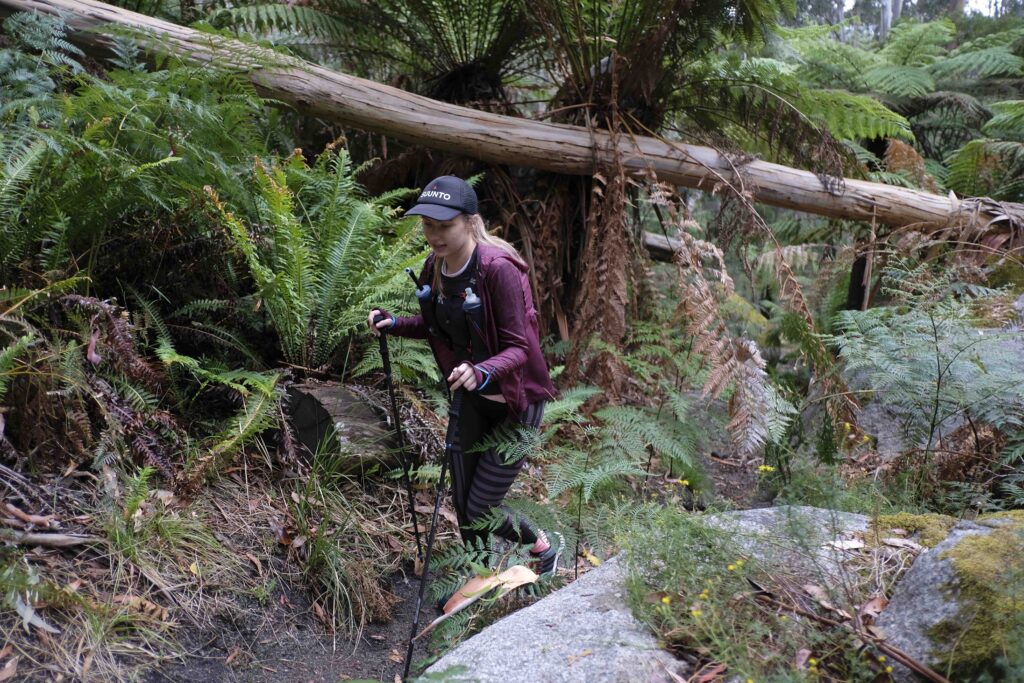There are 3 reasons you are going to get wet inside your rain jacket
- Your rain jacket is letting water in. i.e. it’s water resistance capability isn’t suitable for your conditions or the water resistance technologies are damaged and failing.
- There is perspiration inside the jacket.
- There is condensation inside the jacket caused by a difference in temperature outside and inside it. As temperatures drop outside your jacket, the warm humid air you produce inside the jacket contacts the cooler surface of the jacket and changes from vapour to liquid causing beads of water to form on the inside of your jacket.
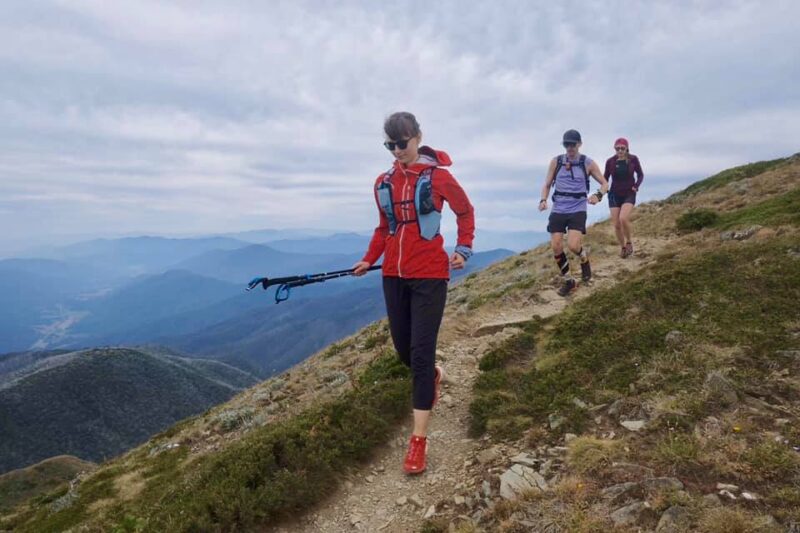
Keeping dry
- If your jacket is failing you can give it wash using a rain jacket specific product like Nikwax tech wash and reinvigorate the water repellent coating by using a Nikwax waterproofing coating. Every time you wash your jacket, it gets dirty or your sweat in it can all effect its water resistant ability. Having the right jacket for the job is one of the first considerations we should make. To establish if your jacket is suitable for the conditions check this chart
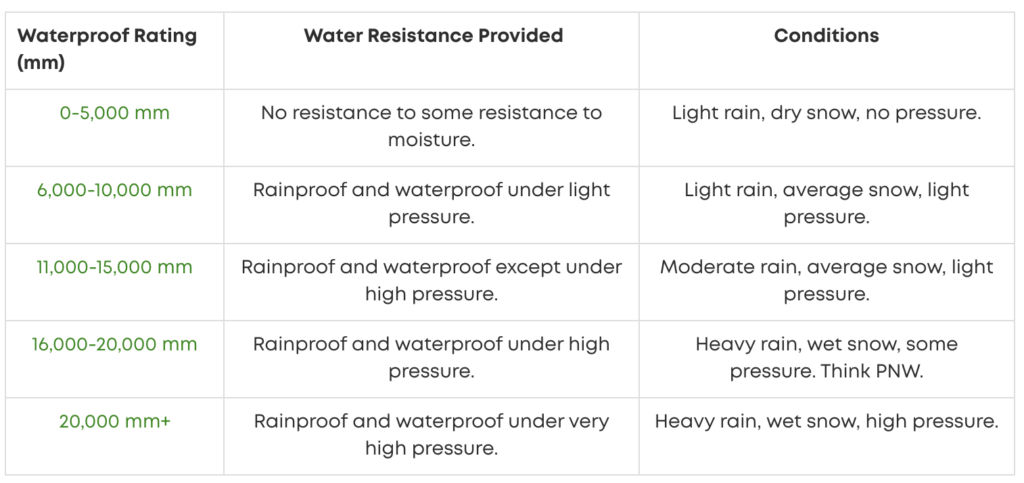
This is the most common water resistance rating system used but not all brands use this. If you are having problems identifying the water resistance rating of a jacket try researching the fabric technology of the jacket e.g. Dryvent, Pertex, Gore-tex, H2No.
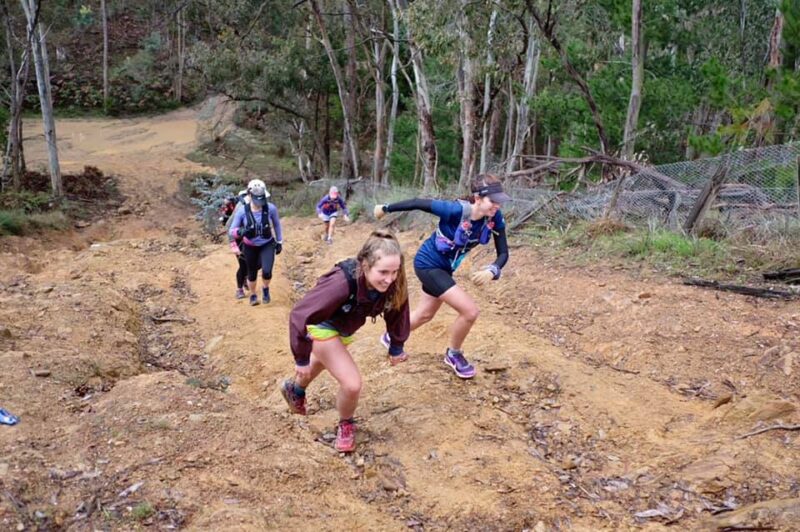
2. Perspiration. If you can run without perspiring problem solved, or you could just slow down. Both of these are inherent problems for runner so let’s just assume we are going to sweat. The aim of the game is to decrease the amount of perspiration under the rain jacket. Manage your layers, keep your perspiration down by only wearing what you need. Keep your emergency layers in your pack and ready to go rather than on you when not needed. This is particularly important in the event of emergency when loosing mobility may mean needing dry emergency gear to keep your core temperature up. Avoid wearing cotton clothes which absorb and retain liquid. Instead opt for dry wicking technical running gear. Have a look at a technical garments thickness (GSM) and its construction. Thinner, looser woven technical fabrics such as micro mesh will allow more air flow through them than a tighter, smoother tech fabric with a heap of printed transfers on it.
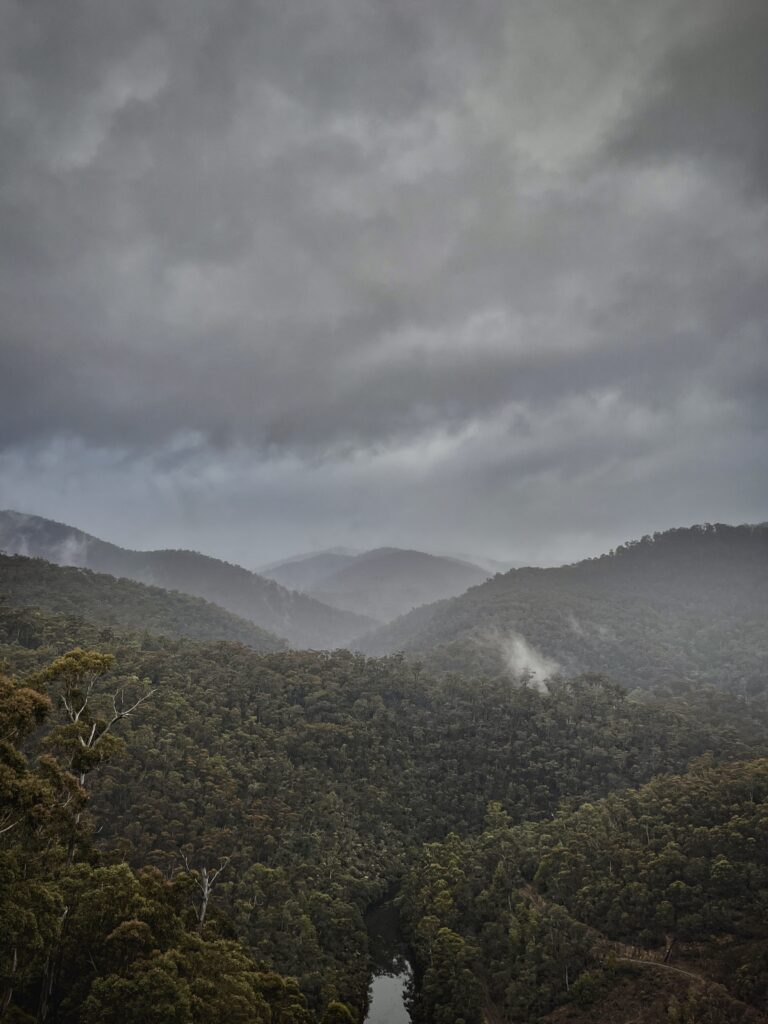
3. Condensation. The bad news for trail runners is condensation isn’t going anywhere. The science says when cold hits hot it’s going to happen and living in Victorian and Melbourne weather this happens a lot. The good news is it might involve buying some new gear to help manage it. Dealing with the condensation caused by increased body temperature and humidity of perspiration within the jacket can be done in a few ways. Wearing layers underneath the jacket will help put a cooler layer between the jacket and your warm skin. Most trail running specific jackets designs are not just about keeping water out, but include being breathable and letting air out. Think of how great a plastic garbage would be at keeping the rain off you. However if you start to warm up and sweat in it, you are going to be just as wet as if you weren’t wearing it because with that impressive waterproofing comes absolutely no ability for the warm vapour to escape. So check your jackets breathability rating. Breathability is normally measured in terms of how many grams (g) of water vapour can pass through a square meter (m2) of the fabric from the inside to the outside in a 24 hour period i.e. 20k or 20,000 g/m2. The higher the number, the more breathable the jacket. To better understand these rating systems these articles do wonders at breaking it down https://www.evo.com/guides/outerwear-waterproof-ratings-and-breathability https://www.trekandtravel.com.au/blogs/trek-travel-events-and-blog/understanding-waterproof-breathable-membrane-ratings. The fabric technology is not the only way you can increase breathability, you can use other design features such as pit zips, opening the chest zip and sizing up to increase circulation and the ability for warm air to escape the jacket. Sizing up can allow you to wear your jacket over your pack, creating some airflow between your body and your jacket. All this will help reduce condensation. So when it comes time to buy a jacket don’t forget to take into account how hot you run and how much you sweat to help make sure you purchase the right breathable rain jacket for you.
Our tours provide lightweight, trail running specific rain jacket hire options, or speak to our friends at Bogong equipment, Backpacking Light, Paddy Pallin who have a great a range of jackets and some super helpful and wise staff who love gear talk.
If you’ve got any questions or comments about this article or topic drop a comment below or drop us a message on our contact form, info@trailbus.com.au, or on our socials. We hope to take you out, beyond and back on Victoria’s best trails soon. Safe and sweaty trails to you all.
